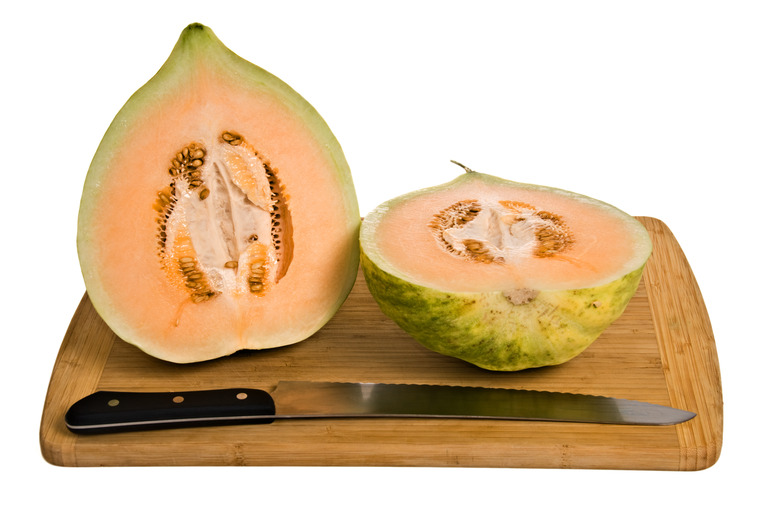How To Tell If A Crenshaw Melon Is Ripe
We may receive a commission on purchases made from links.
Melons are different sizes and colors, but many of them are related. The crenshaw melon was created as a cross between a casaba melon and a muskmelon. The melons are generally large and oblong with rich, golden pink flesh. They ripen in the late season.
Meet the Crenshaw Melon
Meet the Crenshaw Melon
The crenshaw is closer to the cantaloupe than the watermelon. They are a winter variety of melon that are assigned the botanical name Cucumis melo var. inodorous, which they share with the honeydew and the casaba melon. When ripe, the crenshaw melon is round but pointed on the stem end, generally weighing in at about 6 pounds.
This casaba hybrid has a rind that is typically green and gold, smooth with no netting. The flesh is usually a deep pinkish orange, not unlike a ripe cantaloupe. They are vining fruits that grow in warm climates. Melons are thought to have been native to Asia, but the fruits have been cultivated so long that the details about native habitat have been lost.
Grow a Crenshaw Melon
Grow a Crenshaw Melon
Crenshaws need a long growing season. If your area has long, hot growing seasons, you can direct seed the melons into the garden. Otherwise, select fast-maturing varieties or start the plants inside some three weeks before the last frost of the season.
Crenshaw melons grow best when planted in warm soil. Since sandy soil heats up fastest, it's a good choice. You can also use black plastic or fabric row covers to speed up soil warming. Sow the seeds 1/2 inch under the soil surface and keep the soil moist until the seeds germinate. Continue to irrigate well until the melons are about the size of a tennis ball. Though melon vines are usually supported by cages or trellises, you can allow them to trail along the ground in the garden if there is enough room.
Pick a Ripe Crenshaw
Pick a Ripe Crenshaw
The key to enjoying melons is making sure they ripen on the vine. So how can you tell if your crenshaw is ripe? Keep feeling the rind at the large end of the melon. When you feel the rind softening a bit, it's a sign of ripeness.
You can also look at the melon and smell it to judge ripeness. A ripe crenshaw is golden and carries a rich, melony smell, especially near the stem end. One other test is to try separating the stem of the crenshaw from the vine. If it comes off easily, it is probably ripe.
